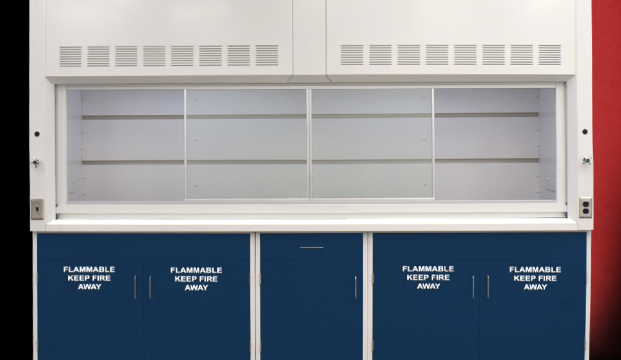When it comes to types of fume hoods, there is much to be discussed….and much to be debated.
Why?
Because fume hoods can be categorized based on their size, functionality, materials used, and specific applications they are designed for. All of these could be considered a different type, but are they? We won’t go down that rabbit hole and will try to stick to some basics.
Without further ado, and for this article, there are four types of fume hoods:
- Bench-top fume hood
- Floor-mounted fume hood (aka walk-in fume hood)
- Double-faced fume hood
- Portable fume hood
Bench-Top Fume Hood
A benchtop fume hood, sometimes called a tabletop fume hood, is an essential tool in laboratories for handling various chemical substances. It helps to protect researchers by filtering out harmful fumes and gases during experiments.
Floor-Mounted Fume Hood
A floor-mounted fume hood, also known as a walk-in fume hood, is designed to be installed from the ground up rather than placed on top of another surface. It’s like a mini room where you can comfortably work. This type of fume hood is perfect for handling large tools or equipment, like drums, processing units, or robots, especially when dealing with hazardous chemicals. The spacious doors make it easy to bring in big machines or tables when necessary. These fume hoods come in various sizes to suit different requirements, but typically they’re similar in size to a small closet.
Double-Faced Fume Hood
The double-sided fume hood is designed with two entrances and a sleek aerodynamic structure, providing a complete 360-degree view. It’s perfect for showcasing experiments in classrooms or prep rooms. You can find this type of fume hood as a regular bench-top or wall installation, or even as a portable unit. They are commonly found in classrooms and laboratories where teaching demonstrations are a regular occurrence.
Portable Fume Hood
Portable fume hoods, also called recirculating range hoods, are a cost-effective and convenient option. Unlike traditional hoods, they don’t require any ductwork or wall penetration. You can easily move them around your lab as they are smaller or equipped with wheels. Plus, they are eco-friendly and consume less energy compared to full-sized fume hoods.
While portable fume hoods can be convenient, there are challenges to keep in mind. The filtration method may expose workers to higher risks of toxins. Regular maintenance is also necessary for the filters to function properly.
Considering a Fume Hood?
There you have it, in the world of fume hoods, there are many different options and types. From the compact and versatile bench-top fume hoods to the spacious and accommodating floor-mounted (walk-in) models, each type serves a unique purpose.
Despite the differences, all fume hoods share the common goal of protecting laboratory personnel from harmful exposures. Understanding these variations helps in selecting the right fume hood that best fits the specific needs and safety protocols of any lab setting.
Need help determining what type of fume hood you need, reach out to the experts at Fisher American.




